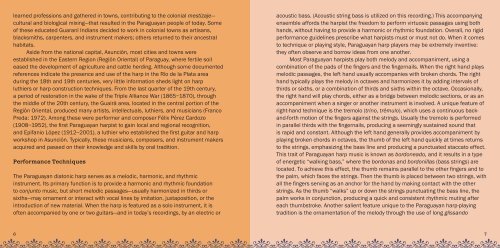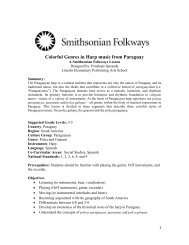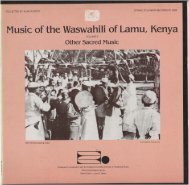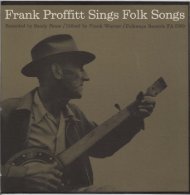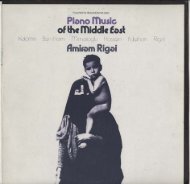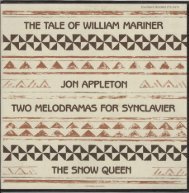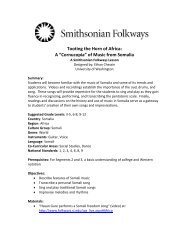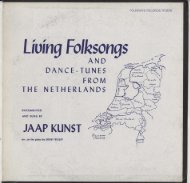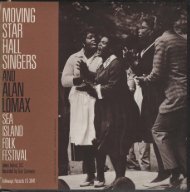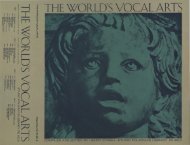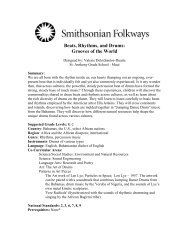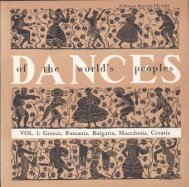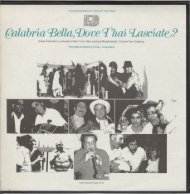Maiteí América: Harps of Paraguay
Maiteí América: Harps of Paraguay
Maiteí América: Harps of Paraguay
Create successful ePaper yourself
Turn your PDF publications into a flip-book with our unique Google optimized e-Paper software.
learned pr<strong>of</strong>essions and gathered in towns, contributing to the colonial mestizaje—<br />
cultural and biological mixing—that resulted in the <strong>Paraguay</strong>an people <strong>of</strong> today. Some<br />
<strong>of</strong> these educated Guaraní Indians decided to work in colonial towns as artisans,<br />
blacksmiths, carpenters, and instrument makers; others returned to their ancestral<br />
habitats.<br />
Aside from the national capital, Asunción, most cities and towns were<br />
established in the Eastern Region (Región Oriental) <strong>of</strong> <strong>Paraguay</strong>, where fertile soil<br />
eased the development <strong>of</strong> agriculture and cattle herding. Although some documented<br />
references indicate the presence and use <strong>of</strong> the harp in the Río de la Plata area<br />
during the 18th and 19th centuries, very little information sheds light on harp<br />
luthiers or harp construction techniques. From the last quarter <strong>of</strong> the 19th century,<br />
a period <strong>of</strong> restoration in the wake <strong>of</strong> the Triple Alliance War (1865–1870), through<br />
the middle <strong>of</strong> the 20th century, the Guairá area, located in the central portion <strong>of</strong> the<br />
Región Oriental, produced many artists, intellectuals, luthiers, and musicians (Franco<br />
Preda: 1972). Among these were performer and composer Félix Pérez Cardozo<br />
(1908–1952), the first <strong>Paraguay</strong>an harpist to gain local and regional recognition,<br />
and Epifanio López (1912–2001), a luthier who established the first guitar and harp<br />
workshop in Asunción. Typically, these musicians, composers, and instrument makers<br />
acquired and passed on their knowledge and skills by oral tradition.<br />
Performance Techniques<br />
The <strong>Paraguay</strong>an diatonic harp serves as a melodic, harmonic, and rhythmic<br />
instrument. Its primary function is to provide a harmonic and rhythmic foundation<br />
to conjunto music, but short melodic passages—usually harmonized in thirds or<br />
sixths—may ornament or interact with vocal lines by imitation, juxtaposition, or the<br />
introduction <strong>of</strong> new material. When the harp is featured as a solo instrument, it is<br />
<strong>of</strong>ten accompanied by one or two guitars—and in today’s recordings, by an electric or<br />
acoustic bass. (Acoustic string bass is utilized on this recording.) This accompanying<br />
ensemble affords the harpist the freedom to perform virtuosic passages using both<br />
hands, without having to provide a harmonic or rhythmic foundation. Overall, no rigid<br />
performance guidelines prescribe what harpists must or must not do. When it comes<br />
to technique or playing style, <strong>Paraguay</strong>an harp players may be extremely inventive:<br />
they <strong>of</strong>ten observe and borrow ideas from one another.<br />
Most <strong>Paraguay</strong>an harpists play both melody and accompaniment, using a<br />
combination <strong>of</strong> the pads <strong>of</strong> the fingers and the fingernails. When the right hand plays<br />
melodic passages, the left hand usually accompanies with broken chords. The right<br />
hand typically plays the melody in octaves and harmonizes it by adding intervals <strong>of</strong><br />
thirds or sixths, or a combination <strong>of</strong> thirds and sixths within the octave. Occasionally,<br />
the right hand will play chords, either as a bridge between melodic sections, or as an<br />
accompaniment when a singer or another instrument is involved. A unique feature <strong>of</strong><br />
right-hand technique is the tremolo (trino, trémulo), which uses a continuous backand-forth<br />
motion <strong>of</strong> the fingers against the strings. Usually the tremolo is performed<br />
in parallel thirds with the fingernails, producing a seemingly sustained sound that<br />
is rapid and constant. Although the left hand generally provides accompaniment by<br />
playing broken chords in octaves, the thumb <strong>of</strong> the left hand quickly at times returns<br />
to the strings, emphasizing the bass line and producing a punctuated staccato effect.<br />
This trait <strong>of</strong> <strong>Paraguay</strong>an harp music is known as bordoneado, and it results in a type<br />
<strong>of</strong> energetic “walking bass,” where the bordonas and bordonillas (bass strings) are<br />
located. To achieve this effect, the thumb remains parallel to the other fingers and to<br />
the palm, which faces the strings. Then the thumb is placed between two strings, with<br />
all the fingers serving as an anchor for the hand by making contact with the other<br />
strings. As the thumb “walks” up or down the strings punctuating the bass line, the<br />
palm works in conjunction, producing a quick and consistent rhythmic muting after<br />
each thumbstroke. Another salient feature unique to the <strong>Paraguay</strong>an harp-playing<br />
tradition is the ornamentation <strong>of</strong> the melody through the use <strong>of</strong> long glissando<br />
6 7


